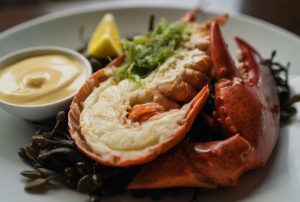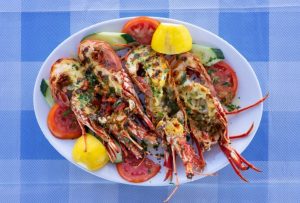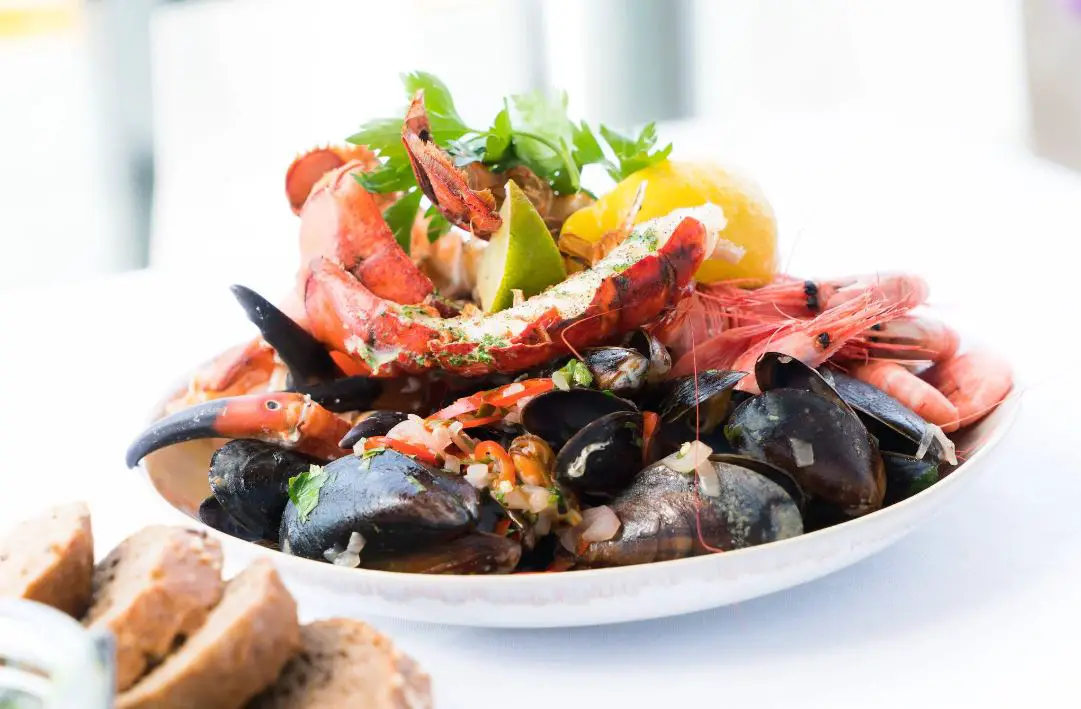Introduction to Cooking Crab Legs
Cooking crab legs is a delightful culinary adventure, offering a taste of the ocean’s bounty. This guide will explore the various types of crab legs and the best methods to cook them to perfection.
The Culinary Delight of Crab Legs
Crab legs, a seafood favorite, are renowned for their sweet, tender meat and are a staple in many cuisines. The most popular types include King Crab, known for its large size and rich flavor; Snow Crab, prized for its delicate, slightly sweet taste; and Dungeness Crab, which offers a balance of sweetness and succulence. Each type brings its unique texture and flavor profile, making crab legs a versatile ingredient for a range of dishes. Whether steamed, boiled, grilled, or baked, crab legs can be a simple yet luxurious meal, often served with melted butter and lemon wedges to enhance their natural flavors. Cooking crab legs is surprisingly straightforward, making them a fantastic choice for both special occasions and casual dining.
Selecting Quality Crab Legs
Choosing the right crab legs is crucial for a delicious seafood meal. Understanding the differences between fresh and frozen options can significantly impact the final dish.
Fresh vs. Frozen: What to Look For
When selecting crab legs, freshness is key. Fresh crab legs should have a mild, sea-breeze aroma and a moist appearance. If choosing frozen, look for crab legs that are well-packaged, without any signs of freezer burn or ice crystals, which can indicate they have been frozen for too long. Frozen crab legs are often pre-cooked, making them a convenient option as they only require reheating.
Tips for Buying the Best Crab Legs
To ensure the best quality, purchase crab legs from a reputable seafood market or supplier. The color of the shell can also be an indicator of quality – bright, clean shells are a good sign. Don’t hesitate to ask the vendor about the source and freshness of the crab legs. For the best culinary experience, consider the type of crab: King Crab legs are ideal for a luxurious treat, Snow Crab legs are great for feeding a crowd, and Dungeness Crab legs offer a classic crab flavor ideal for various recipes.
Preparation Essentials
Proper preparation is the first step to ensuring your crab legs are delicious and ready to cook.
Thawing Techniques for Frozen Crab Legs
If you’re working with frozen crab legs, it’s important to thaw them correctly to maintain their quality. The best method is to place them in the refrigerator overnight, allowing them to thaw gradually. This slow process helps retain the crab legs’ texture and flavor. Avoid thawing crab legs at room temperature or under warm water, as this can lead to bacterial growth and affect their quality.
Cleaning and Prepping Crab Legs
Before cooking, rinse the crab legs under cold water to remove any ice crystals or debris. Check for any damaged or broken pieces and remove them. If the crab legs are particularly large, you might need to cut them into smaller, more manageable sections for even cooking. Ensure that your crab legs are dry before cooking, especially if you’re grilling or baking them, to achieve the best texture.
Grilling Crab Legs for a Unique Taste
Grilling adds a smoky flavor to crab legs, making them a delightful treat.
Grilling Techniques and Tips
Preheat your grill to a medium-high heat. Lightly oil the grill grates to prevent sticking. Place the crab legs on the grill, and cook for about 4-5 minutes on each side. The crab legs are already cooked (especially if they were frozen), so you’re primarily reheating them and adding a smoky flavor.
Marinades and Rubs for Grilling
To enhance the flavor, consider marinating the crab legs for about an hour before grilling. Use a simple marinade like garlic butter, lemon-herb, or a spicy Cajun mix. Alternatively, apply a dry rub of your choice for a quick flavor boost. After grilling, you can brush them again with melted butter or your marinade for extra richness.

Creating Dipping Sauces
The right dipping sauce can elevate the flavor of crab legs.
Classic Butter Sauce and Variations
A classic melted butter sauce is a timeless accompaniment to crab legs. For a twist, add minced garlic, a squeeze of lemon juice, or fresh herbs like parsley or dill. These additions bring a new depth to the butter, complementing the crab’s sweetness.
Innovative Dipping Sauce Ideas
For those looking to experiment, there are numerous innovative sauces to try. A tangy cocktail sauce, a creamy aioli, or a spicy Sriracha mayo can add a delightful kick. For something more exotic, a mango salsa or a ginger-soy dipping sauce offers a balance of sweet and savory flavors that pairs wonderfully with the crab.
Crab Legs in Global Cuisines
Exploring the diverse culinary traditions involving crab legs reveals a world of flavors and techniques.
Regional Variations in Cooking Crab Legs
Around the globe, regional cooking styles bring out unique flavors in crab legs. In the American South, crab legs are often boiled in a spicy, flavorful broth, part of a larger seafood boil. In Asian cuisines, crab legs might be steamed with aromatic herbs and spices, or stir-fried with bold sauces like black bean or chili garlic. European coastal regions prefer simpler preparations, like grilling or baking, to highlight the crab’s natural flavor, often served with herb-infused butters or light sauces.
International Crab Leg Recipes
Each culture adds its twist to crab leg dishes. In Japan, crab legs are a delicacy often served in sushi or as part of a kaiseki meal. Mediterranean countries might include crab legs in a seafood paella or pasta dish, cooked with olive oil, garlic, and fresh herbs. These international recipes provide a wealth of inspiration for incorporating crab legs into various culinary styles.
Sustainable and Ethical Seafood Practices
Sustainability and ethical sourcing are crucial in seafood consumption, including crab legs.
Understanding Sustainable Seafood
Sustainable seafood is sourced in a way that maintains healthy fish populations and ecosystems without harming the environment. This involves responsible fishing practices that avoid overfishing and reduce bycatch (the unintentional capture of non-target species).
Choosing Ethically Sourced Crab Legs
When purchasing crab legs, look for certifications like the Marine Stewardship Council (MSC) label, which indicates sustainable practices. Research the source of the crab legs and opt for suppliers who are transparent about their fishing methods and commitment to sustainability. This not only ensures the health of marine ecosystems but also guarantees high-quality seafood.

Recipe for Freezing Crab Meat
Freezing crab meat can be a great way to preserve its freshness for later use. Here’s a simple recipe for preparing crab meat for freezing, which ensures that it retains its quality and flavor when you’re ready to use it.
Ingredients:
- Fresh or cooked crab meat
- Water or crab stock (optional)
- Freezer-safe containers or heavy-duty freezer bags
Instructions:
- Prepare the Crab Meat:
- If you’re starting with live crabs, cook them first. Boil or steam the crabs as you would normally. For already cooked crab meat (like leftovers or pre-cooked crab), ensure it’s cooled to room temperature.
- Shell the Crab:
- Remove the crab meat from the shells. Be careful to remove any shell fragments.
- Portion the Crab Meat:
- Divide the crab meat into portions that you’ll likely use in future recipes. This makes it easier to thaw only what you need.
- Optional – Add Liquid:
- For added moisture, you can cover the crab meat with a bit of water or crab stock. This step is optional but can help maintain the texture of the crab meat.
- Packaging for Freezing:
- Place the crab meat in freezer-safe containers or heavy-duty freezer bags. If using bags, squeeze out as much air as possible before sealing to prevent freezer burn.
- Label and Freeze:
- Label each container or bag with the date. Properly stored, crab meat can be kept in the freezer for up to 3 months for optimal quality.
Tips for Freezing and Thawing:
- Avoid Freezer Burn: Ensure the packaging is airtight. Freezer burn can affect the texture and flavor of the crab meat.
- Thawing: Thaw the crab meat in the refrigerator overnight when you’re ready to use it. Avoid thawing at room temperature.
- Refreezing: It’s not recommended to refreeze thawed crab meat, as this can degrade its quality.
- Use Promptly After Thawing: Use the crab meat within 1-2 days after thawing for the best quality.
Using Frozen Crab Meat:
Frozen crab meat is versatile and can be used in various recipes once thawed, such as crab cakes, salads, soups, pasta dishes, or simply reheated and served with butter and lemon.
By following these steps, you can enjoy the convenience of having crab meat available in your freezer, ready to add a delicious seafood touch to your meals.
FAQs About Freeze Crab Meat
Conclusion
Cooking crab legs is an art that combines technique, creativity, and respect for the ingredient.
We’ve explored various methods, from boiling and steaming to grilling and baking, each offering a unique way to enjoy crab legs. Remember, the key is to preserve their delicate flavor and texture, regardless of the cooking method.
With this guide, home chefs are equipped to experiment with different cooking styles and flavors. Whether following traditional recipes or creating new ones, the journey of cooking crab legs is as rewarding as it is delicious. Embrace the adventure and enjoy the rich, succulent flavors of this seafood delicacy.


